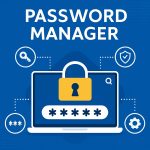Be Cyber Aware: If You Connect It, Protect It
The modern workplace — and home — is more connected than ever. The average household now has more than 10 internet-connected devices, including computers, smartphones, TVs, and IoT gadgets like speakers and security cameras. Globally, over 30 billion devices are online today, each one a potential entry point for attackers.
Connectivity drives innovation and productivity, but it also creates opportunity — not just for businesses, but for hackers. To stay safe in a world where everything is connected, we must all become Cyber Aware.
The Cyber Aware Campaign is built around a simple message: If you connect it, protect it. Whether it’s your phone, your smart fridge, or your company’s cloud network, every connected device can be targeted — and every one needs protection.
Why Cyber Awareness Matters
Cybercrime is evolving faster than most businesses can adapt. Too many organisations still rely on outdated security practices that worked a decade ago but are no match for today’s threats. The mindset of “we’ve never had a problem before” is no longer good enough.
Being Cyber Aware means recognising that every digital action — from opening an email to connecting to Wi-Fi — carries a level of risk. It’s about understanding those risks and using the right tools and habits to mitigate them.
Here’s what you need to know to protect your business and your data in 2025.
Ransomware: Still on the Rise
The first computer viruses of the 1970s were created as harmless experiments. Today, malware is a billion-dollar criminal industry. Ransomware, in particular, is one of the most destructive threats facing businesses. It locks your files, encrypts your systems, and demands payment for their release.
Even worse, if backups are connected to the same network, they can be encrypted too — leaving businesses without a clean recovery option. Paying the ransom rarely solves the problem; it only funds further attacks.
A Cyber Aware business invests in offsite or cloud-based backups and tests them regularly. If the worst happens, recovery is fast, data is restored, and operations continue with minimal disruption.
For deeper protection, solutions like Dark Web Monitoring help identify stolen credentials early — before attackers use them in ransomware campaigns.
Phishing: Smarter, Faster, Harder to Detect
Phishing scams have evolved far beyond the clumsy “Nigerian prince” emails of the early 2000s. Modern phishing is sophisticated, personalised, and often convincing enough to fool even experienced employees.
Attackers study their targets, mimic internal email formats, and spoof domains to appear legitimate. You might receive what looks like a request from your CEO asking for an urgent wire transfer or a “secure” document login.
A key part of being Cyber Aware is slowing down before responding. Always verify suspicious requests using a different communication method. Train your staff to inspect sender addresses carefully, report unusual messages, and never click unexpected links or attachments.
Insider Threats: When Risks Come from Within
Not every cyber risk originates from the outside. As more teams work remotely, the lines between personal and professional devices blur. Data can be accidentally or intentionally leaked by employees who have too much access or use unsecured systems.
Sometimes, an unhappy employee might copy sensitive data before leaving for another job. Other times, someone might unknowingly expose customer records through unsafe cloud sharing.
To reduce this risk, implement role-based access control and data monitoring. Virtual desktop environments and managed IT support from Exodesk help keep business data secure, no matter where employees work from.
Password Leaks: The Easiest Way In
Password reuse remains one of the most common and dangerous habits. When credentials from one site are leaked, attackers can use them to access completely unrelated accounts — banking, cloud storage, even internal company systems.
If you’re serious about being Cyber Aware, strong password practices aren’t optional. Every password should be unique, long, and random. Use multi-factor authentication wherever possible, and avoid using personal information in your logins.
Tools like Password Managers make this simple by storing complex credentials securely and automatically generating unique ones for each site. Combined with the techniques from our Secure Passwords guide, you’ll reduce the chance of your data appearing on the Dark Web.
Cryptojacking: Hidden Attacks on Your Systems
Cryptocurrency has become a favourite tool for cybercriminals — not just for payments but also for theft. In a cryptojacking attack, hackers infiltrate your system to secretly mine cryptocurrency using your device’s processing power.
This kind of attack is subtle. You might notice slower computers or higher electricity costs, but the real damage is unseen: decreased system lifespan, network strain, and security gaps that can lead to larger breaches.
Staying Cyber Aware means paying attention to performance issues and running regular scans to detect unauthorised applications or scripts.
IoT Devices: Convenience Meets Vulnerability
Smart technology has transformed how we live and work. From connected vehicles and smart thermostats to voice assistants and video doorbells, our devices are constantly communicating online.
Unfortunately, many IoT products are designed for convenience, not security. Default passwords, unpatched software, and open connections make them easy targets. Once compromised, a single device can give hackers access to your entire network.
To stay Cyber Aware, always:
-
Change default passwords immediately after setup.
-
Update firmware and software regularly.
-
Disable features you don’t use.
-
Segment IoT devices from your main business network.
Every connected device should follow the same rule: if you connect it, protect it.
Hacker Sophistication: The Constant Evolution
Today’s cybercriminals are not lone hackers in basements — they’re organised, funded, and highly skilled. Attacks are automated, global, and often run like professional businesses. Meanwhile, many organisations still treat cybersecurity as an afterthought.
Being Cyber Aware is about understanding that security isn’t static. Threats evolve, and your defences must evolve too. Regular risk assessments, ongoing staff training, and managed protection services are essential to staying one step ahead.
If you’re unsure about your current security posture, Exodesk can help identify weaknesses and recommend proactive solutions.
Frequently Asked Questions
1. What does “Cyber Aware” mean?
It means being conscious of the digital risks you face and taking steps to protect your devices, data, and systems from cyber threats.
2. What is the purpose of the Cyber Aware Campaign?
The campaign aims to raise awareness about online safety and empower individuals and businesses to adopt better cybersecurity habits.
3. How can I start being more Cyber Aware at work?
Start by using strong passwords, enabling multi-factor authentication, updating software regularly, and training your team to recognise phishing attempts.
4. Why are connected devices such a big risk?
Each device connected to the internet can become a potential target for hackers, especially if left unsecured or unpatched.
5. How does Exodesk help businesses stay secure?
Exodesk provides managed cybersecurity solutions, monitoring, and support tailored to New Zealand businesses — helping you stay protected and compliant.
6. What’s the most important step I can take today?
Update your systems, change weak passwords, and back up your data securely. Even small actions can prevent major incidents.
7. Can cyber threats really impact small businesses?
Absolutely. Small businesses are often targeted precisely because they have fewer defences, making them easier and faster to breach.
8. How often should I review my security setup?
At least once a year, or any time your systems, staff, or business processes change significantly.
Final Thoughts
Being Cyber Aware isn’t just about protecting your data — it’s about protecting your business, your customers, and your reputation. Every connected device, app, and account introduces risk, but with the right awareness and tools, those risks can be managed effectively.
To learn how Exodesk can help you stay secure in a connected world, visit Exodesk or connect with us on LinkedIn to keep up with more insights.


